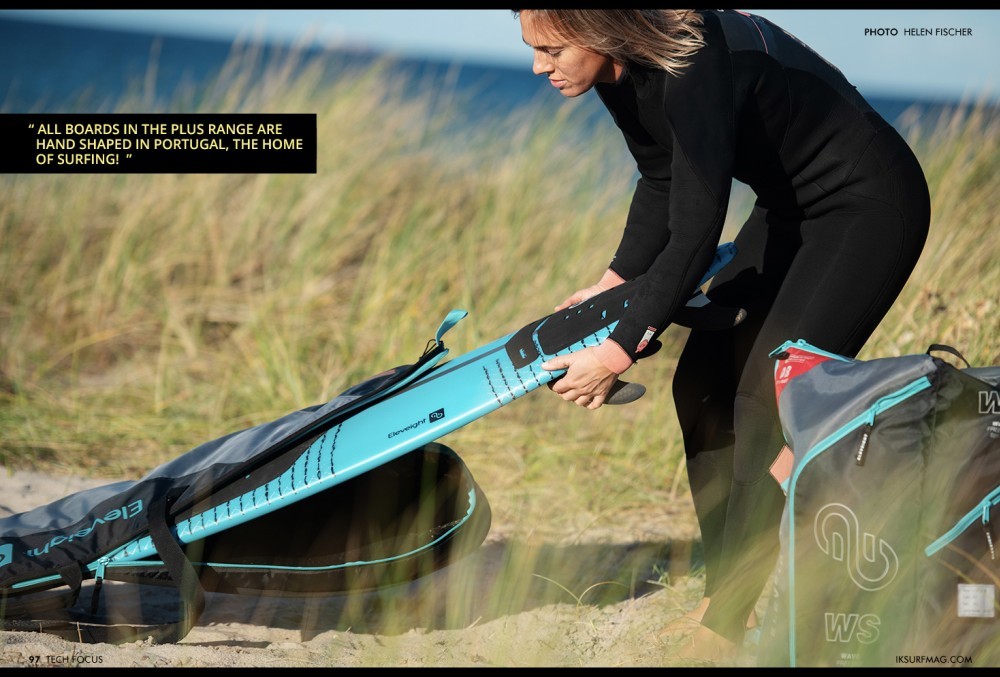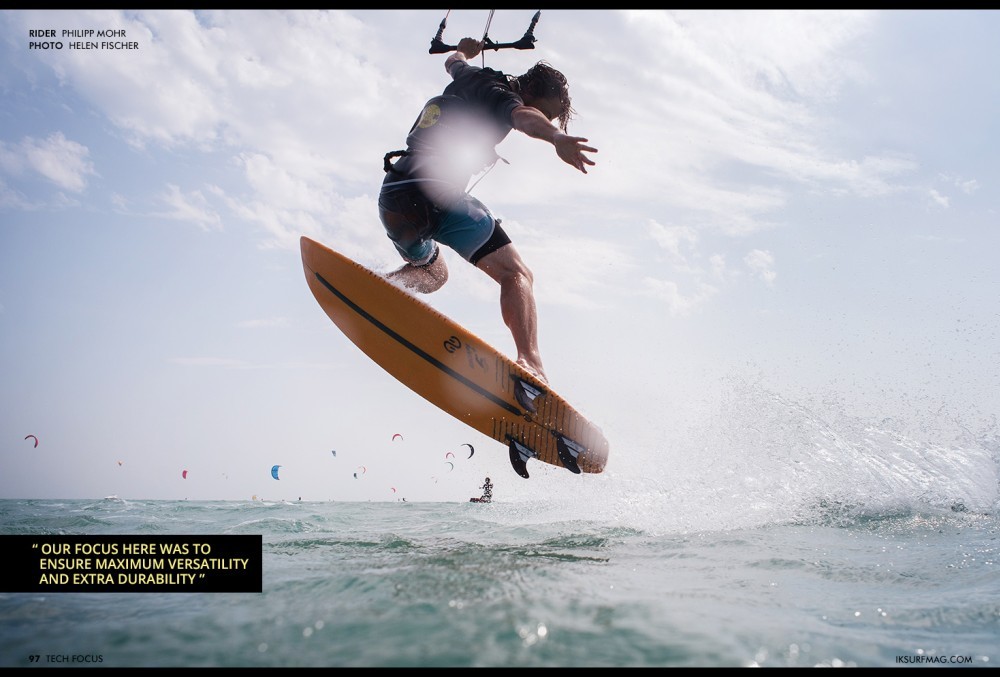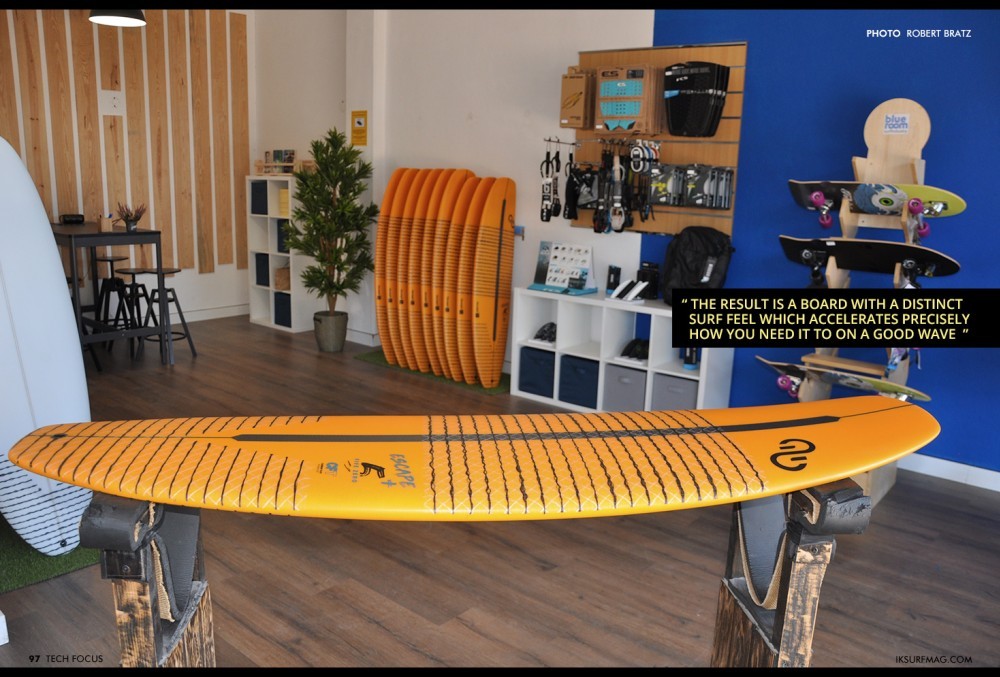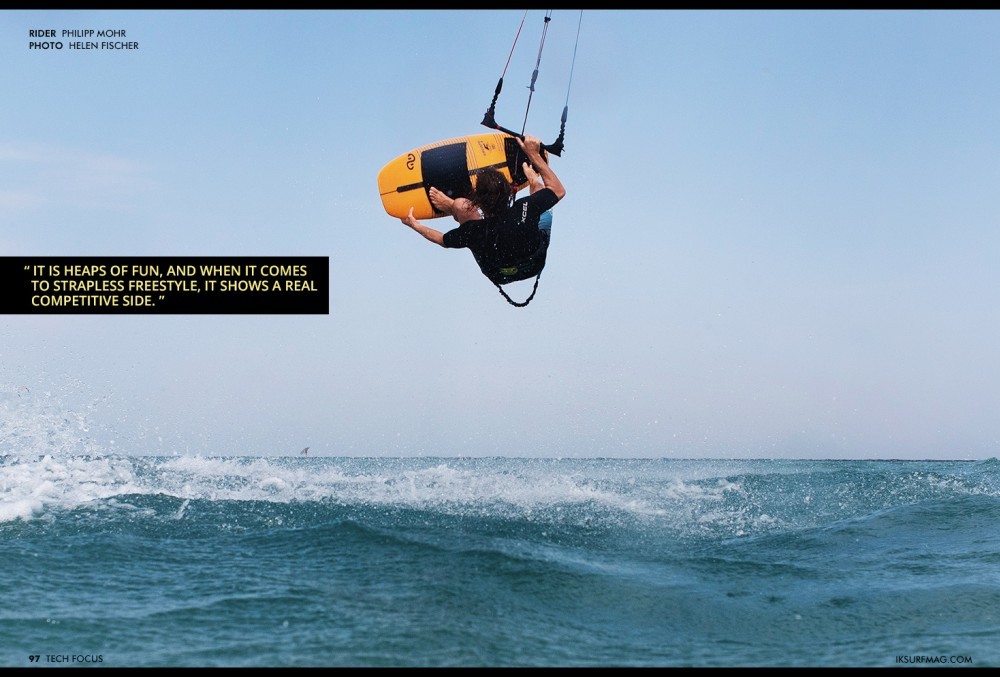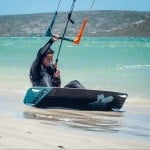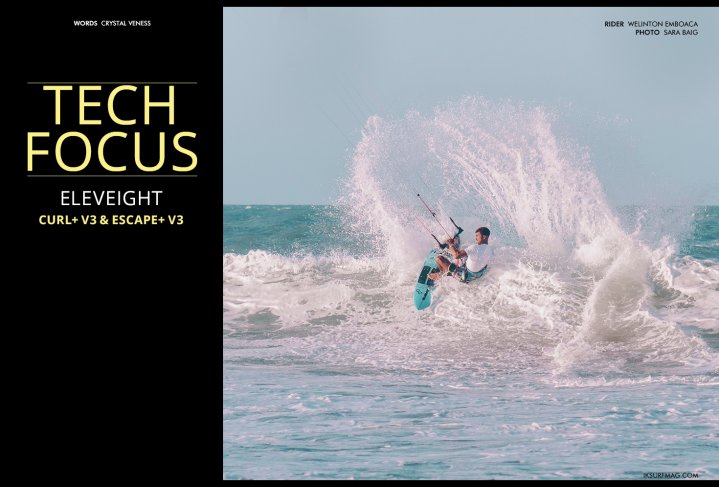
Tech Focus: Eleveight Surfboards
Issue 97 / Fri 10th Feb, 2023
The newest surfboards in the Eleveight lineup, the Curl+ and Escape+, are an eye-catching pair that have just been updated to the latest V3 models. We checked in with Robert Bratz to find out what goes into creating these hand shaped boards!
What sets these boards apart from the original models of the Curl and Escape?
All of us in the Eleveight Brand Team are avid wave riders, and we wanted to create a board with a pure surf feel. Aside from having a shape designed for performance, the essential criteria had to be the construction, specifically related to the flex and rebound. To achieve this for the Plus range, we use our proven Carbon Flex Construction. The CFT follows a classic surfboard construction but is tailor-made for the demands of modern kitesurfers. To ensure that production meets our goals, all boards in the Plus range are hand shaped in Portugal, the home of surfing!
Tell us more about your production in Portugal! What made you choose this location?
Kite-powered surf riding is a great passion in our whole team and is also a reason why Peter Stiewe, our CEO/Co-Founder and board designer (as well as myself), are located in Portugal. Initially, we were looking for a local factory to help us with the sampling process. But, after a short while, we realised the potential for handmade Portuguese production. Portugal has a great tradition of surfboard manufacturing, and having a skilled supplier in our close reach allows for fantastic communication and a great work relationship.
The implementation of new ideas, the prototyping process, and quality control is very easy when you have a face-to-face relationship; each visit to the factory is always a real delight for us. The whole manufacturing team shares the same passion for state-of-the-art products, and it is a good feeling to work with people with the same spirit and values.
What benefit does hand shaping offer?
The hand shaping process in Portugal offers many advantages. Firstly, we can produce smaller batches and react to the demand of the market. Secondly, European production makes shipping faster and more affordable, and in certain ways, we have less impact on the environment. Finally, we can update our shapes quicker and also arrange custom-made orders. The production process offers us more flexibility, and we can serve the customer better.
What are the most significant changes in the V3 versions of the Eleveight surf lineup?
Our latest Plus version is the third generation of custom-made boards in Portugal. The Escape+ V3 has an updated shape which is a bit more versatile, and comes in sizes 5.0, 5.2, and 5.4. For the Curl+ V3, we used the same sizes, but the shape is slightly updated.
The CFT construction is different to the previous models. We are using a high-density PU foam laminated with polyester. The alignment of the carbon stringer changed to reflect the latest research in surfboard technology. We also changed the set-up of the Biax layer to offer the best ratio between weight and durability.
What is the difference between your standard CVC construction and the CFT technology used in the Plus line?
Our CVC construction, used in the Escape and Curl, is a very durable and light composite sandwich construction. We use an EPS core and epoxy resin for this construction tweaked with PVC reinforcements and carbon stringers. Our focus here was to ensure maximum versatility and extra durability, which becomes handy when you try the latest strapless freestyle tricks or simply need the best travel companion.
Our CFT construction instead focuses on flex and a dynamic drive. We use PU foam with a wood stringer, a construction well-known in classic surfboard production. To make the boards more suitable for the specific use of kitesurfing, we reinforce the critical parts with an integra vector net and a carbon stringer on both the top and bottom. The result is a board with a distinct surf feel which accelerates precisely how you need it to on a good wave, like the ones we're lucky to have in Portugal!
What performance difference can a user expect to feel in a CFT board versus a CVC board? How does it change the ride?
Both constructions feature the same shape DNA. The Curl and Curl+ are for medium to high waves with a focus on down-the-line riding. The Escape and Escape+ are more versatile and great for smaller and weaker waves and for any sort of strapless freestyle action.
But if we go more into details, then the CFT construction offers a bit more flex which you will feel in the turns. The arc of the bottom turn is a bit tighter and has more momentum, the rails have more bite, and the transition into the top turn is more dynamic. Also, the general riding and landings are a bit smoother due to more flex. The CFT construction can really make a difference for the pure strapless rider who is looking for the distinctive surf feel and buoyancy of a real surfboard.
The Curl+ V3 is a wave performance shape, and the Escape+ V3 is a freestyle shape. If a rider is unsure what shape would be the best choice for them (and both aren't an option!), what aspects should they consider when deciding?
When you decide to buy a new kitesurf board, the main question would be where you want to ride it and what is your preferred style. Most of us have fairly average conditions with weaker surf and side-to-onshore conditions. Here, we need a board which is very versatile, generates speed easily, and has less swing weight. In smaller surf, it is also nice to mix up the session with some strapless freestyle jumps. A shorter shape with a bit more tail area will be the best companion for these conditions. In this case, I would always use one of our Escape models as my go-to weapon. The board offers a great spectrum in all conditions and turns on a dime in smaller surf. It is heaps of fun, and when it comes to strapless freestyle, it shows a real competitive side.
Are there any scenarios where a rider would choose the traditional Curl or Escape over the Plus versions? What would they be?
This comes down to rider preference. Both constructions offer advantages and disadvantages; it's a bit like with twin tips, as not everybody needs a full carbon board. A lot of kitesurfers prefer a durable construction or want to have the option to ride with straps, in which case our CVC construction is more suitable. Travellers also benefit from a more durable CVC construction as it's more impact resistant, keeping your board safe on long journeys.
By Crystal Veness
Editor at IKSURFMAG, Crystal Veness hails from Canada but is based in South Africa. When she isn't busy kitesurfing or reporting on the latest industry news for the mag, she is kicking back somewhere at a windy kite beach or working on creative media projects.




